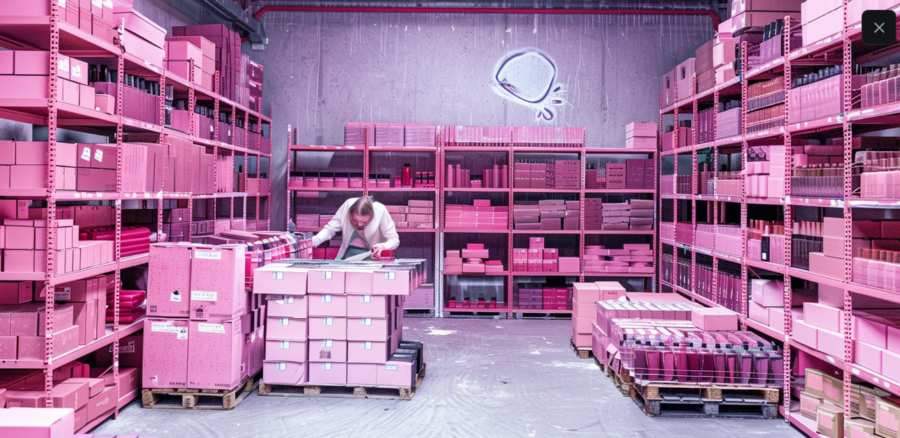Viral beauty trends aren’t polite. They don’t check in to see how your inventory’s doing or whether your packaging supplier is three weeks behind. They simply explode—leaving a mess of stockouts, delivery delays, and customers posting passive-aggressive IG stories about how they “used to love this brand.”
Why Beauty Trends Move Like Lightning in a Skincare Bottle
Beauty is built for virality. It’s visual. It’s personal. It’s emotional. The right 15-second clip of someone dramatically wiping off a full face of makeup with a cleansing balm can move more product than six months of PPC spend.But that comes with a cost. Algorithms have zero chill. A single product going viral can send your demand graph into a shape that looks suspiciously like Everest, minus the sherpa support. Brands not prepared for this sharp climb often end up scrambling for labor, running out of components, or sending apologetic “we’re working on it” emails while hoping their customers haven’t already jumped ship.
Scalable Fulfillment or Bust
If your fulfillment system is built for “steady and manageable,” you’re going to have a bad time. Viral events don’t care if it’s your manufacturer’s off-season or if Sandra in operations is out sick.What you need is elasticity—an ability to scale up operations fast, even temporarily. This might mean:
- Building relationships with 3PLs that specialize in beauty and offer flexible capacity
- Using modular packing stations that can be reconfigured when demand surges
- Training a small pool of “on-call” labor during calm periods so they can step in quickly when things heat up
Pre-Orders: Not Just for Tech Bros
Pre-orders can be a lifeline when demand outpaces supply. And no, you don’t have to make it sound like you’re launching the next iPhone. Just be transparent.A well-communicated pre-order strategy can do two important things: stop customers from bailing entirely, and give you some breathing room to produce without panic.
However, don’t promise what you can’t deliver. Set realistic shipping windows and update buyers often—nothing fuels refund requests like radio silence.
Also: don’t slap “pre-order” on your product page if your supplier hasn’t confirmed component delivery dates. That’s not a strategy—that’s a gamble, and your odds are worse than a lip liner in a heatwave.
Smart Buffer Inventory Without Hoarding
Buffer stock isn’t just a big-brand luxury. Small and mid-sized beauty brands can—and should—keep fast movers in slightly larger quantities than demand forecasts suggest. The trick is to stay nimble without becoming a warehouse dragon sitting on a hoard of aging eyeliner.One approach is to identify “launch-sensitive” products likely to go viral and work with your suppliers to reserve raw materials without fully committing until needed. It’s about buying time and flexibility, not drowning in product you can’t shift.
Customer Expectations Don’t Care That You’re Drowning
Let’s be brutally honest: customers don’t care that your freight was delayed or that your fulfillment team is crying into their bubble mailers. They want what they ordered—and they want it now.That doesn’t mean you’re doomed to endless refund requests and snarky TikToks. Clear communication is your best defense. Don’t wait until someone’s order is three days late before letting them know. Use automation tools to send proactive updates. Be transparent about delays. Offer discount codes or freebies as peace offerings where appropriate.
And for the love of highlighters, don’t use generic delay emails. If your tone sounds like it was written by a robot that just learned English, you’re going to lose people. Human language builds trust. “We didn’t expect this serum to sell out in three hours either. We’re restocking as fast as humanly possible and will update you by Friday” goes a long way.
Turning Chaos Into Data Gold
A viral moment might feel like a logistical breakdown, but it’s also a chance to learn. Every scramble tells a story. Did your systems flag the demand spike early enough? Did certain SKUs move faster than expected in specific regions? Was your packaging process the bottleneck?If you treat each viral incident like a post-mortem opportunity, you’ll slowly build a playbook that helps you handle the next one with fewer coffee-fueled meltdowns.
Consider investing in tools that let you model demand scenarios based on social trends. There are platforms now that can track TikTok mentions and project inventory needs with unsettling accuracy. It might sound dystopian, but it beats being blindsided.
Beauty and the Bottleneck
At some point, a product you barely thought would move will become the star of a viral GRWM video—and your entire operation will groan under the weight of it. That’s the reality of modern beauty commerce.But this cycle isn’t going away. If anything, the pace is accelerating. What sets resilient beauty brands apart is how they respond. Flexible logistics, smart forecasting, transparent customer care, and a little willingness to roll with the absurdity—these are the new essentials.
FOMO can drive people to spend $22 on a lip gloss because it made someone cry on camera. But fulfillment fatigue? That’s what drives them to never shop with you again. So prep your warehouse, make peace with your pre-order page, and keep your calm when the next 30-second video breaks your SKU.
The next viral surge is coming. The question is: will you ride it, or will it ride you?
Article kindly provided by imdfulfilment.com

